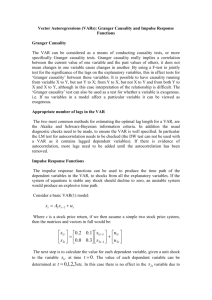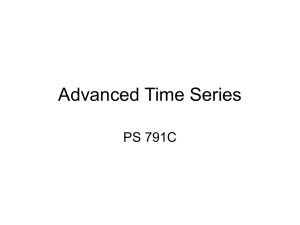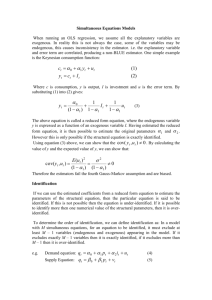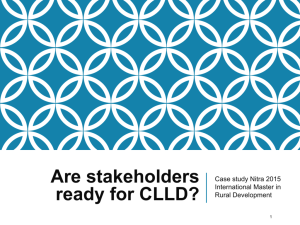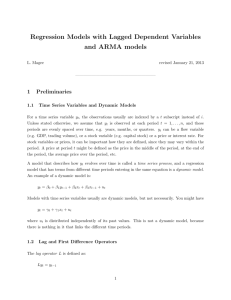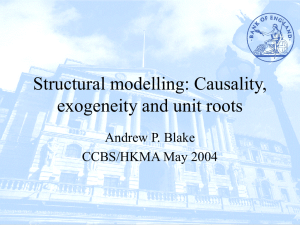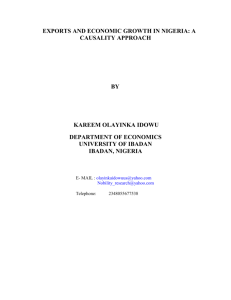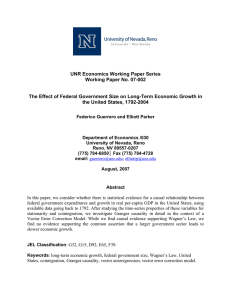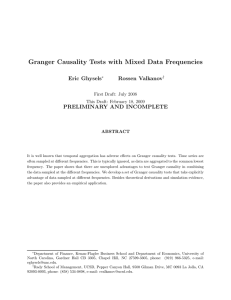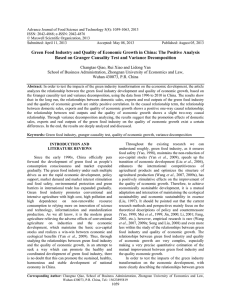Exercise Test for Granger Non-Causality
advertisement
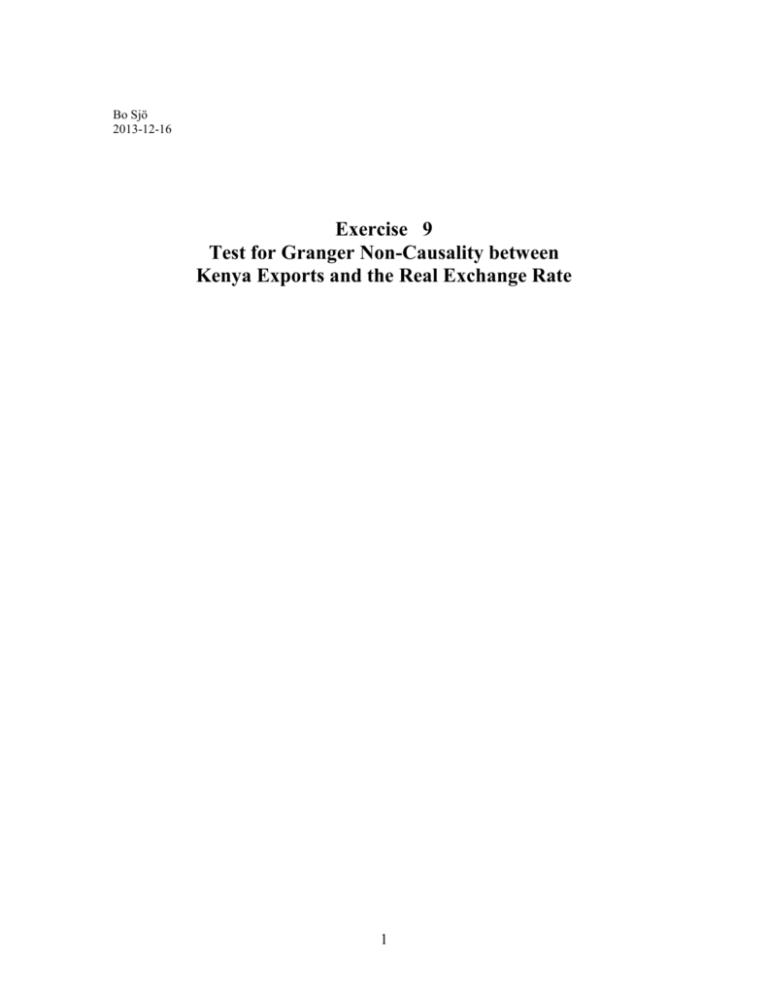
Bo Sjö 2013-12-16 Exercise 9 Test for Granger Non-Causality between Kenya Exports and the Real Exchange Rate 1 1. Introduction This exercise deals with Granger non-causality tests, often referred to as Granger causality tests. The basic idea is that if a variable can be found to predict another variable, it might cause that variable (to change). On the other hand if a variable cannot predict another variable it cannot cause it.1 The test concerns the lead and lag structure among a set of variables and tests specifically if the lag structure of some variable predict another variable in a VAR model. For details see Sjö (2013). Estimate a VAR, restrict the lags of the variable and test the significance. If you cannot reject the null, all lags are zero, the variable cannot Granger cause the lefthand variable in the equation. If you reject the null, you can say that the variable is Granger causing the other variable. (=it predicts the other variable). 2. The Problem The export industry in Kenya is complaining to the Central Bank of Kenya that the appreciation of the Kenyan shilling is making exports harder. They demand action to curb the appreciation of the shilling. But, are they right? Is the shilling appreciating too much and thereby reducing exports or is the other way around? Do higher exports lead to an appreciation of the shilling? A GNC test of exports and the real exchange rate might help to broaden/deepen the discussion. The question is: “Is exports ‘causing’ appreciation, or is appreciation causing (a fall) in exports?” To find out set up a VAR in log first differences, you might want to start with 12 lags (3 years). But, the choice is yours, where do you find the optimal lag structure and white noise residuals? 2. Data The data is in kenya_exports.xls. The data is quarterly. Name Exch CPI Exp Imp CPI_USA Variable Kenya shilling /USD FX rate Consumer price index for Kenya Kenya’s Export in domestic currency (Nominal) (imports for Kenya - not used) U.S. Consumer price index First, you need to construct the real exchange rate (qt) for Kenya according to 1 Verbeck dicusses Grager causality on page 355 but is not very extensive on that subject. 2 qt Pt , f S t Pd ,t , and then take logs. Second, you need to calculate the real export value, and take logs. Third, form logs and first differences of the variables. Finally, look at the graphs of the data you created. 3. Instructions Here we are interested in first differences (changes) between the variables, under the assumption that they are I(0), which should be tested of course. Build a bivariate VAR model of the two data series (growth in exports and changes in the real exchange rate) in logs. You might want to go around three year back (12 lags) to account for all dynamics. Check for outliers, remember to look at graphs. Once a suitable VAR has been found, the GNC test is performed by restricting all the lags of one variable in one equation to be zero. This is usually done with a Chi-square or F-type of test. The null is that all parameters of the restricted lag structure are zero, the alternative is that the lags are significantly different from zero and predicts the equation-variable. EViews: In EViews you get both Chi-square and F-test depending on where in the program you do the causality testing. After estimation, under view find Lag structure, and then Granger causality test. This gives you the chi-square distributed test. You can also look under View for Lag exclusion test. If you know the VAR and its lag order, you can go to Quick, Group Statistics and Granger Causality Test. In the Window you name the series that makes up the VAR and indicate the lag length. This leads to a GNC test using the F-distribution, which is the better distribution. However, you do not get any output from the VAR itself, so you need to estimate and test you VAR before coming here. The null is that there is no Granger causality (all parameters associated with the lags of the variable in that particular equation are set to zero), the rejection of the null is that there is “Granger causality”. PcGive: Under the Test menu choose exclusion restrictions. The next window allows you to restrict coefficients (lags) of you choice. Typically from the VAR, the exclusion test 3 gives: variable1_lag_1@first equation; variable1_lag_2@first equation, etc. You can use shift and arrow key to select more than one lag. The test has a chi-square distribution. Final What is your conclusion regarding exports and the real exchange rate? 4
